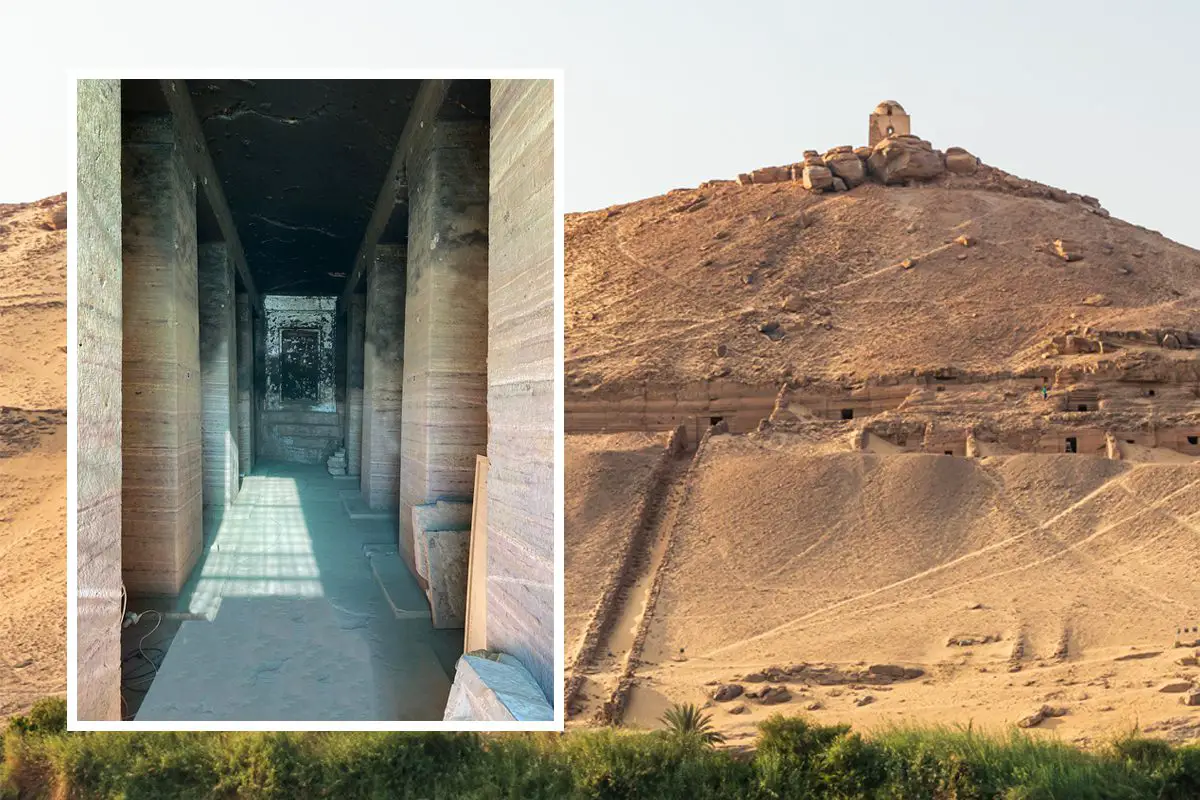A team of archaeologists from the University of Malaga (UMA) and the University of Jaen (UJA), have revealed the oldest Ancient Egyptian tomb that is oriented to the winter solstice.
The tomb (designated No. 33) is located in the necropolis of Qubbet el-Hawa, a site on the western bank of the Nile opposite the city of Aswan. Qubbet el-Hawa served as the resting place of ancient nobles and priests from the Old and Middle Kingdoms of Ancient Egypt.
Archaeologists have identified a tomb that was oriented to the sunrise of the winter solstice, bathing the interior in light that was intended to house the statue of a governor from the city of Elephantine. The tomb was first excavated between 2008 and 2018 and is believed to be the burial place for Governor Heqaib-ankh, who lived during the XII Dynasty around 1830 BC.
Studies by UMA using Dialux Evo, software that can reproduce the position of the sun with respect to the horizon in ancient times, suggests that the Egyptians were capable of calculating the position of the sun and the orientation of its rays to design their monuments.
According to a paper published in the scientific journal, Mediterranean Archaeology and Archaeometry, calculating the orientation of the funerary chapel and the location of the statue of the governor was done by using a one metre long two-cubit pole, a square and some robes.
Speaking of the discovery, a researcher from the University of Malaga said: “The tomb perfectly registered the whole solar cycle, related to the idea of rebirth. While the winter solstice meant the beginning of the sunlight victory over darkness, the summer solstice generally coincided with the beginning of the annual flooding of the Nile, hence both events had an important symbolism linked to the resurrection of the deceased governor.
Header Image Credit : University of Jaen and Malaga





